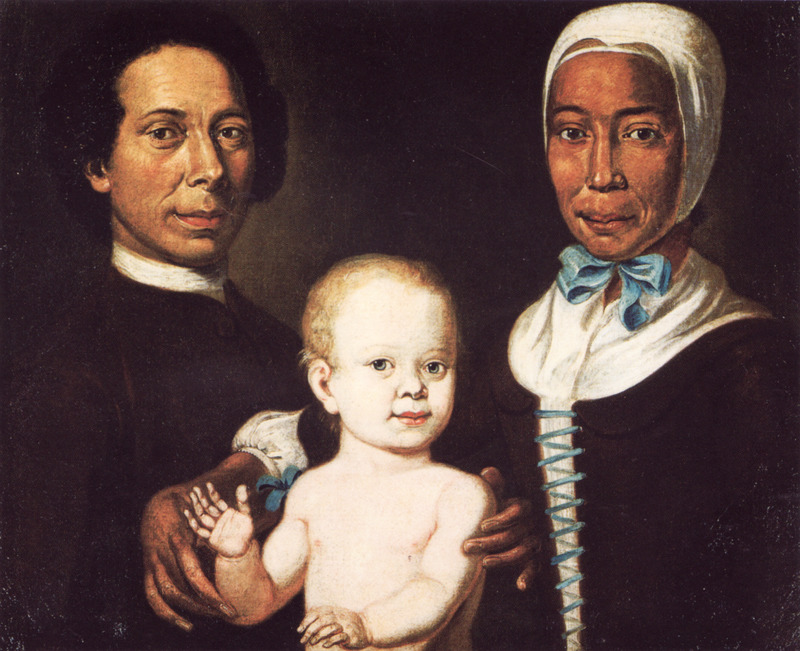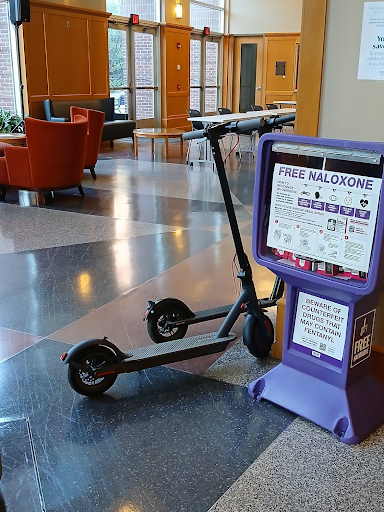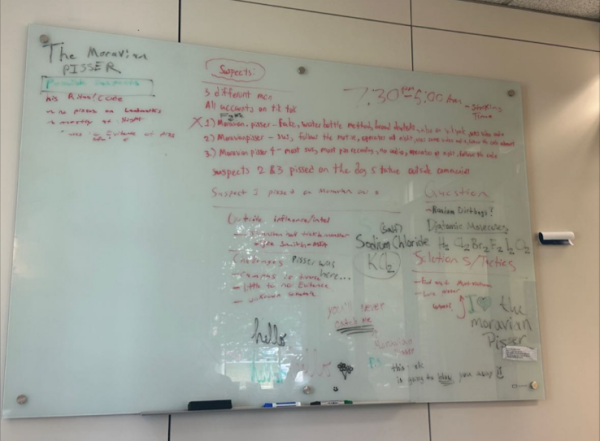Slavery in Colonial Bethlehem
This past year has sparked new conversations about social justice and our nation’s history of racial inequality and ethnic violence.
While the Bethlehem Moravians, who developed Bethlehem in the mid 18th century, are often viewed in high regard for their progressive beliefs in education for all genders and races, equal access to healthcare, women’s rights, and educating indigenous people in their language, underlying complications to this narrative expose both the way our local history is told and the root of institutional racial objectification in early American society, according to Rev. Craig Atwood, interim dean of the Moravian Theological Seminary.
Though slavery is often seen as an issue that pertained only to Southern colonies in antebellum America, “Pennsylvania was one of the first to abolish slavery, but only because they had enslaved people in Pennsylvania,” said Atwood. That includes the Moravians, who despite their efforts to promote equality, both allowed slavery and the purchasing of enslaved people.
According to Rev. Dr. Frank Crouch, professor of the New Testament, also at the Moravian Theological Seminary, Bethlehem’s early growth and development required additional workers from outside the Bethlehem community.
In the meeting minutes record from 1742, the same year that Benigna von Zinzendorf founded Moravian College, the Bethlehem congregation decided to purchase enslaved individuals from St. Thomas as a way to bolster their population of workers, ensure a higher quality of work, and reduce the cost of developing and building Bethlehem.
At the time, St. Thomas — then a Danish colony in the West Indies, now one of the Virgin Islands — was home to a Moravian missionary settlement that was intent on improving the working conditions and spiritual lives of the enslaved people who lived on the nearby plantations and on ordaining some of them.
But, paradoxically, the St. Thomas Moravians became enslavers themselves, and the Bethlehem community imported the practice into America.
To justify their actions, August Spangenberg, a bishop who was instrumental in the creation of the Moravian settlement in Bethlehem, used scripture out of context to argue that the Bible does not specifically condemn slavery. Crouch makes a point that the Moravians rationalized owning people using the same Bible that holds scripture promoting the principles of equality, unconditional love, and avoiding worldly desires and doctrines.
For example, James 1:27 states “pure and undefiled religion in the sight of our God and Father is this: to visit orphans and widows in their distress, and to keep oneself unstained by the world,” which was a principle ignored by 18th-century Moravians, who adopted white supremacist views on social systems.
In other words, the corruption and greed of the church leaders allowed them to adopt societal views on humanity, which biblical virtues flagrantly condemn, instead of relying on the foundations of their practices.
The Bethlehem Moravians used that rationale to compel newly arrived enslaved natives from St. Thomas, including a man known as “Andrew the Moor,” to help them build the Gemeinhaus and the Single Brethren’s House, among other structures.
Once the enslaved people were here, said Crouch, early Moravians decided to set a precedent for human rights in the colonies by giving them the same rights to education and church participation as the white population, believing that all people are called to learn and worship as equals without having equal rights in society.
According to Atwood, Moravian plantations in St. Thomas were used by the Anglican priest and abolitionist James Ramsay to exemplify how Moravians could educate natives and treat them with respect. While Moravians still viewed enslaved individuals in Bethlehem as property of the church congregation, many enslaved people participated in the church and shared the same living and eating quarters as white Moravians.
Additionally, some of the enslaved people in the Moravian settlements of Bethlehem, Winston-Salem (NC), and St. Thomas became ordained in the church and received an education.
Crouch said that there is no evidence that enslaved Moravians in Pennsylvania experienced the kind of cruel and physically-abusive punishments that Blacks suffered on plantations elsewhere in the U.S. and in the Caribbean. His research turned up a letter from Spangenberg in which the bishop claimed that people of color in the community were treated the same as everyone else.
However, enslaved members of the Bethlehem community surely lived with the threat of being sold to a “less-humane” owner if their conduct did not meet the expectations of their Bethlehem masters, said Crouch. “Even looking back in their day, you can’t be more fundamentally wrong than to enslave another person and justify it politically or theologically.”
Slavery had played an active role in the North American colonies over 120 years prior to the arrival of the Moravians to Bethlehem in 1740. Until the Quaker leaders began questioning the morality of slavery in the 1750s, no Christian denomination opposed slavery.
The colonial Moravians felt confident in their ability to create an example of equality in a world where educating enslaved individuals and accepting them as equals in the church congregation was uncommon and deprecated, but still they failed to recognize the inherent cruelty of viewing a human as a possession.
“The Moravians tried and they got things wrong,” said Atwood. Many courageous scholars in the Moravian Church are helping the Moravian Church and Moravian College to more honestly present history. It’s now our responsibility to acknowledge that and ask ourselves, “What are we not seeing when it comes to injustice?” in our own time.








Mi Guyce • Jul 7, 2021 at 1:24 pm
“In other words, the corruption and greed of the church leaders allowed them to adopt societal views on humanity, which biblical virtues flagrantly condemn, instead of relying on the foundations of their practices.” Reminds me of parts of the Moravian Church I remember from the late 60’s and early 70’s. That is 1960’s and 1970’s. I thank them for showing me this. It kept me from getting confirmed.
Conversely I think back to the many, 6 or so, outstanding human beings I met at the church as a youngster and teenager whose pureness was either a diabolical charade, or enlightened power. I choose to believe the latter.
Joyce Hinnefeld • Apr 19, 2021 at 8:43 pm
Thank you for this article, Liam. I’m grateful for your careful research and important reminders here, and also grateful to Moravian scholars like Craig Atwood and Frank Crouch, for their ongoing efforts to address blind spots in the historical record.
Sara McClelland • Apr 19, 2021 at 8:21 pm
Liam, thank you so much for your hard work in educating our community about this difficult part of history. One thing that struck me in your piece was when you quote Rev. Dr. Crouch saying, “…there is no evidence that enslaved Moravians in Pennsylvania experienced the kind of cruel and physically-abusive punishments that Blacks suffered on plantations elsewhere in the U.S. and in the Caribbean.” While I’m glad that he (and you in this article) still condemned justifying the practice of slavery, that is EXACTLY what this statement was doing. There is no place for comments like this in today’s discourse of slavery. All forms of slavery are cruel, inhumane, and downplaying it in anyway does a disservice to everyone who suffered from enslavement and all of us today who are still suffering from the systematic racism pervasive in our society.
Liam Mulligan • Apr 20, 2021 at 11:59 am
Thanks for reading and providing your casual opprobrium. The statement in question is not establishing mitigation using comparison but more to clarify specific, historical condition. Slavery, like any other immoral, nefarious, or malicious act which degrades or destroys one’s humanity, can be committed and performed in various degrees and extremities. In these unprecedented times where the divisions of truth and delusion are not nearly as absolute as we often presume, it is evident that certain contextual statements must be addressed, regardless of their complications, to provide as much information to the reader to establish their own perspectives on the narrative. Though the conclusions you reached seemed so apparent from the privilege of your modern understanding, these concepts were not so deeply understood or acknowledged by our ancestors. Time and time again, we can sense the watchful eyes of history waiting for a generation to fulfill the promises and dreams of the broken and silenced. In this divisive time in American history where we are given the responsibility to act in the intentions of all people for the betterment of our unified future, it is critical to examine the failures and shortcomings of our past in its entirety to be more mindful of where we too may also fall short.
Tom Repasch • Apr 18, 2021 at 11:19 pm
Having been born, raised, and educated (at Moravian) in Bethlehem, I never once was told that the Moravians owned slaves. This is quite a revelation, and I hope the narrative is corrected in educational settings and historical sites, as well as the churches.
Dominic Trabosci • Apr 16, 2021 at 2:52 pm
Thank you for this article Liam. It’s important to be aware of our history, especially the ugly parts.
Nicholas Creary • Apr 16, 2021 at 11:27 am
Thank your for the candid and honest representation of Moravian’s (church and college) implication with the institution of slavery. As Brian Stevenson of the Equal Justice Initiative (www.eji.org) says, truth and reconciliation must be sequential.